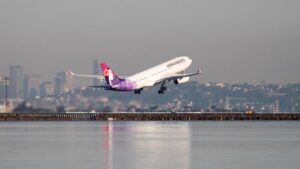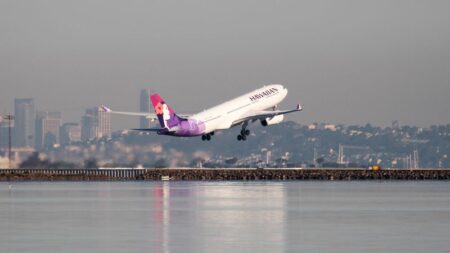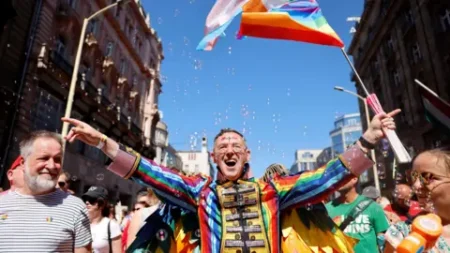In recent developments, Iran has conducted a state funeral for approximately 60 individuals, including high-ranking military commanders and nuclear scientists, who lost their lives during a 12-day conflict against Israel. This conflict, marked by intense violence, culminated in a ceasefire earlier in the week following the United States’ direct involvement, which included bombing significant nuclear sites within Iran’s territory. The event was marked by a somber atmosphere as mourners gathered in large numbers, unified in their grief over the losses sustained.
The state funeral took place in Enghelab Square in Tehran, where a sea of black-clad mourners gathered to pay their respects to the deceased. The coffins, draped in the Iranian flag and displaying the portraits of military leaders, were surrounded by loud chants of slogans from the crowd, accentuating the emotional and patriotic fervor of the occasion. In preparation for this significant event, the Iranian government launched a media campaign, which encouraged wide public participation by offering free transport through buses and metro services. Additionally, government offices were closed to facilitate attendance, illustrating the solemnity and importance of the funeral in the national context.
Among those honored during this event was General Mohammad Bagheri, who held the title of chief of staff of Iran’s armed forces. Tragically, Bagheri was to be buried alongside his wife and daughter, both of whom were victims of the Israeli strikes. The Iranian authorities reported a staggering toll of 627 fatalities within Iran, whereas Israeli sources confirmed 28 deaths as a result of retaliatory missile attacks from Iran. The sheer scale of loss on both sides adds a layer of complexity to the narratives emerging from this conflict.
Notably present at the funeral were significant figures including Iranian President Masoud Pezeshkian and Rear Admiral Ali Shamkhani, an advisor to Supreme Leader Ayatollah Ali Khamenei. Their attendance underscores the high level of recognition given to the deceased given their pivotal roles in Iran’s military and nuclear sectors. Shamkhani himself was a victim of injuries sustained during an Israeli attack earlier in the ongoing conflict, highlighting the personal stakes involved for policymakers and military figures in Iran.
In parallel with the domestic mourning, international tensions remain palpable, primarily fueled by comments from U.S. President Donald Trump. Following the funeral, Trump reiterated his willingness to resort to military action against Iran if deemed necessary, particularly if there were concerns regarding Iran’s capabilities to enrich uranium. His statements accentuate the precarious state of U.S.-Iran relations as both nations navigate the aftermath of the conflict and its ramifications on regional stability.
Iran’s Foreign Minister, Abbas Araghchi, responded to Trump’s inflammatory comments, warning against disrespectful dialogue regarding the Supreme Leader, Khamenei. The Iranian government maintains that the strikes on their nuclear sites resulted in significant damage, yet they emphasize that these acts have not rendered their nuclear ambitions ineffective. In a statement attributed to Araghchi, he argued for the necessity of respectful negotiations, suggesting that belligerent rhetoric only serves to escalate tensions further.
International scrutiny continues as the head of the International Atomic Energy Agency (IAEA), Rafael Grossi, stated that the extent of damage to Iran’s nuclear capabilities remains unclear. He expressed skepticism about the efficacy of military action alone in addressing nuclear proliferation, advocating instead for diplomatic solutions. Amid the ongoing crisis, the complexities of the geopolitical landscape in the Middle East become increasingly evident, with each event interlinking and contributing to a web of conflict and resolution efforts.
The situation remains fluid, with various factions and leaders reacting to developments in real-time. As Iran mourns its losses and contemplates the implications of this confrontation, the international community watches closely, aware that the next steps taken by these leaders could shape the future of peace and security in the region.










